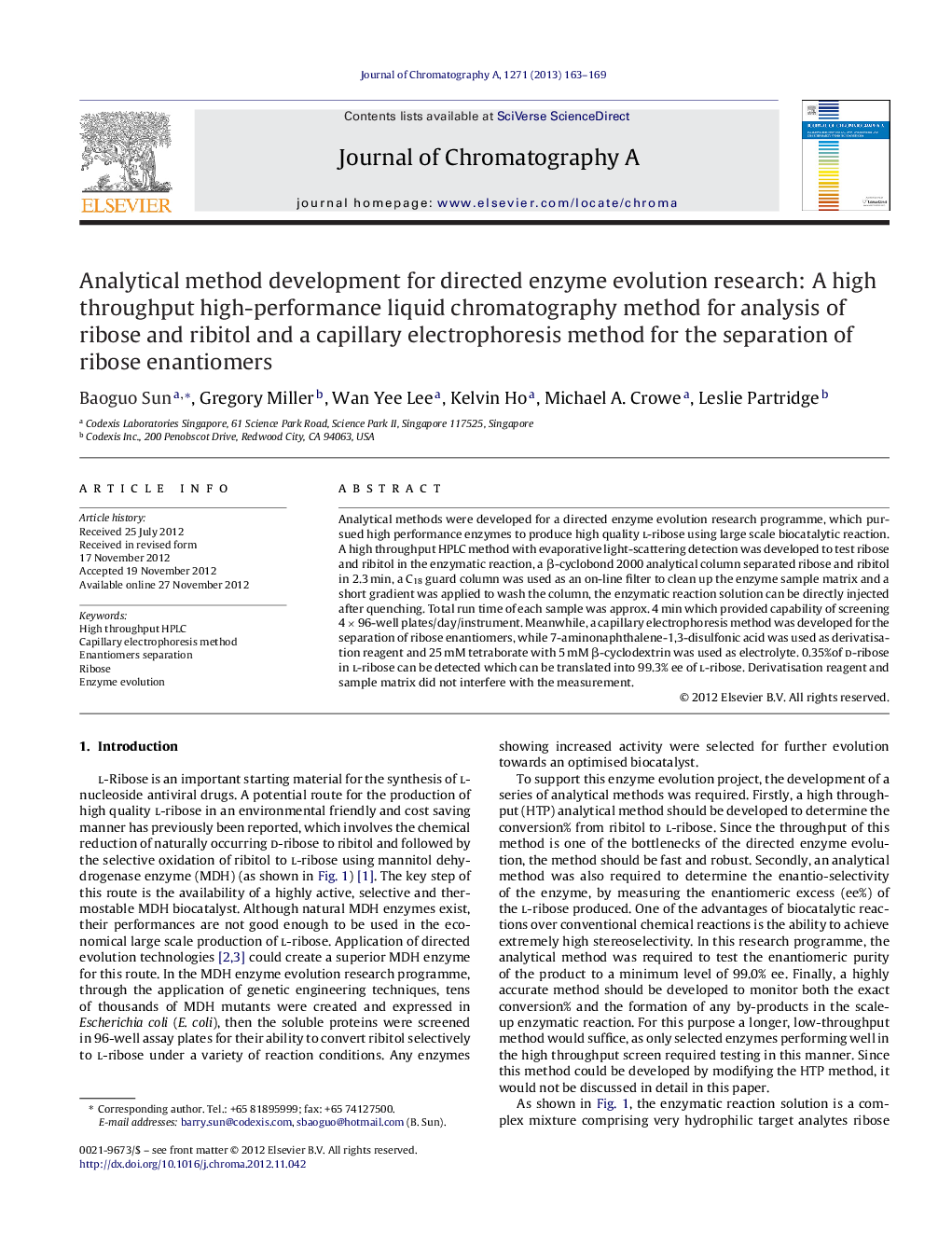| Article ID | Journal | Published Year | Pages | File Type |
|---|---|---|---|---|
| 1201509 | Journal of Chromatography A | 2013 | 7 Pages |
Analytical methods were developed for a directed enzyme evolution research programme, which pursued high performance enzymes to produce high quality l-ribose using large scale biocatalytic reaction. A high throughput HPLC method with evaporative light-scattering detection was developed to test ribose and ribitol in the enzymatic reaction, a β-cyclobond 2000 analytical column separated ribose and ribitol in 2.3 min, a C18 guard column was used as an on-line filter to clean up the enzyme sample matrix and a short gradient was applied to wash the column, the enzymatic reaction solution can be directly injected after quenching. Total run time of each sample was approx. 4 min which provided capability of screening 4 × 96-well plates/day/instrument. Meanwhile, a capillary electrophoresis method was developed for the separation of ribose enantiomers, while 7-aminonaphthalene-1,3-disulfonic acid was used as derivatisation reagent and 25 mM tetraborate with 5 mM β-cyclodextrin was used as electrolyte. 0.35%of d-ribose in l-ribose can be detected which can be translated into 99.3% ee of l-ribose. Derivatisation reagent and sample matrix did not interfere with the measurement.
► A HPLC method with HILIC column and ELSD for testing ribose and ribitol. ► Enzymatic reaction sample solution can be injected directly. ► 7-Aminonaphthalene-1,3-disulfonic acid was used as derivatisation reagent. ► CE with borate buffer for ribose enantiomers separation. ► 99% ee l-ribose can be measured by CE.
